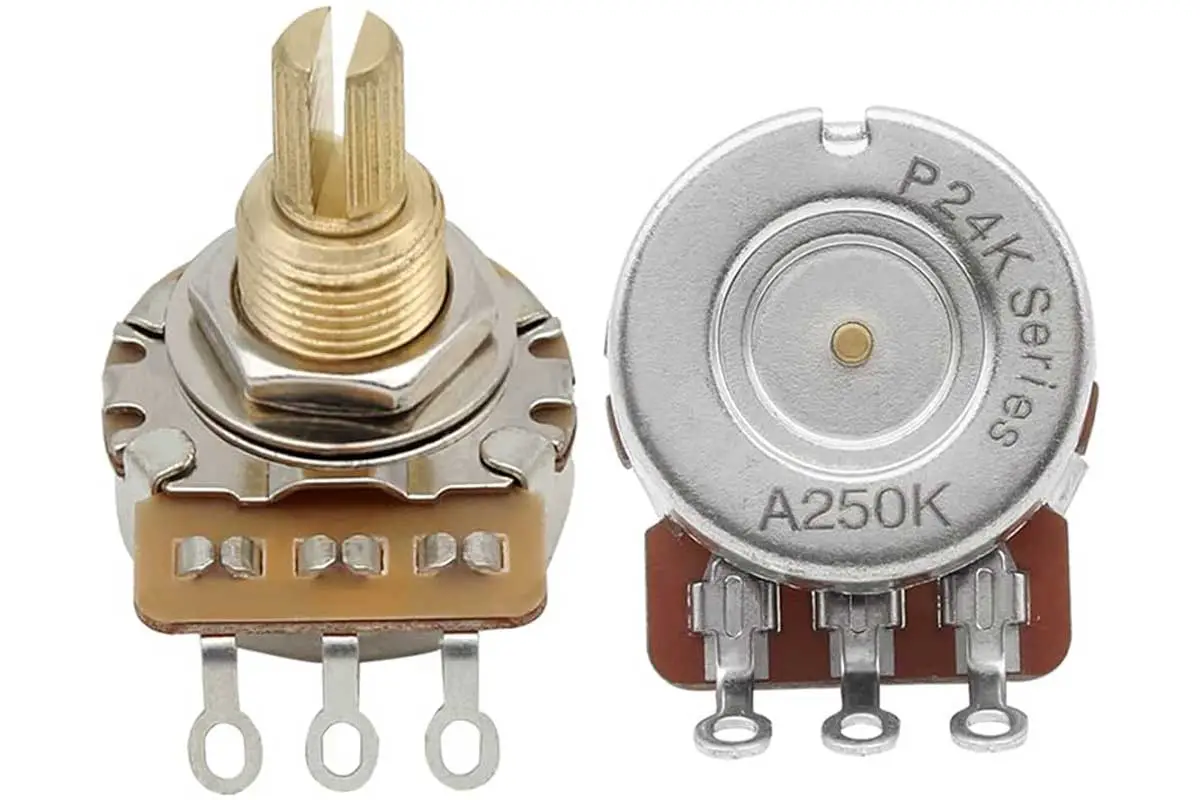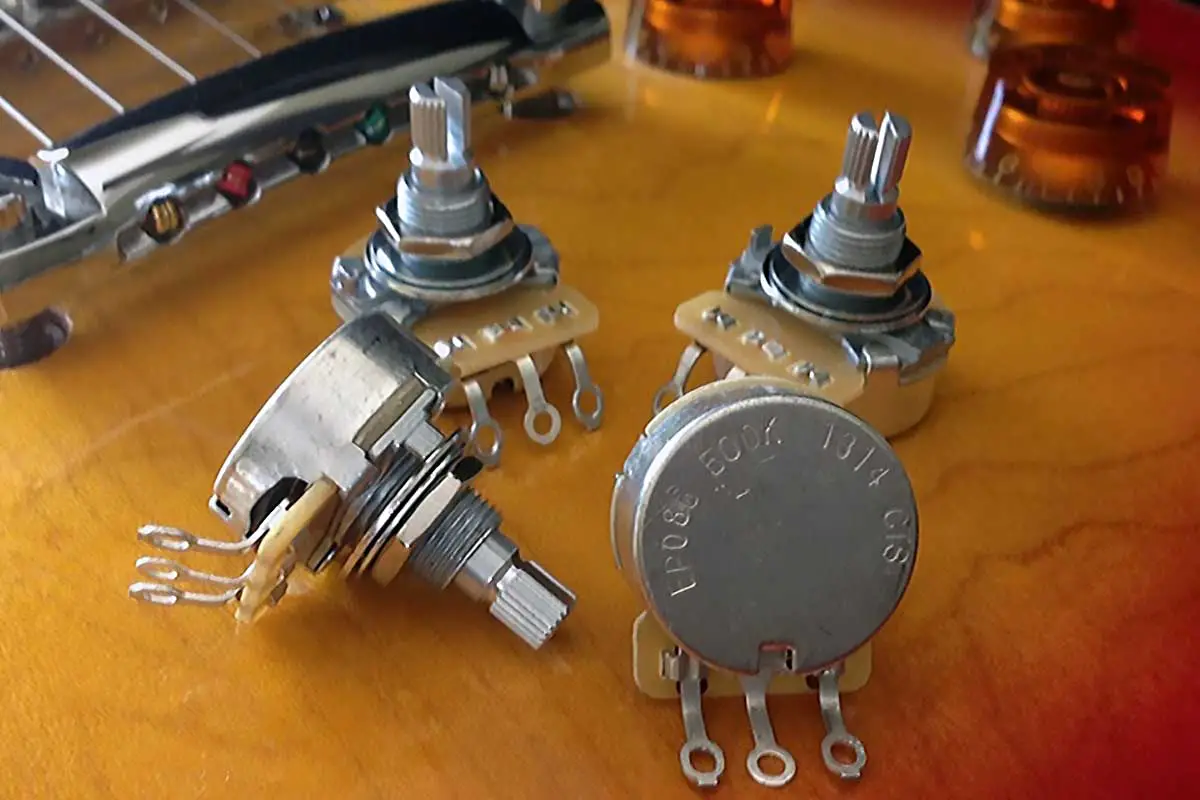Maintaining your guitar’s pristine sound and performance requires careful attention to all its components, including the potentiometers. Potentiometers, or pots for short, are an integral part of your guitar’s electronics. They control the volume and tone, and over time, can accumulate dust and corrosion, which can result in noisy, scratchy, and inconsistent sound. Learning how to clean guitar potentiometers will ensure smooth operation and can prolong the life of your instrument.
To clean the pots on your guitar effectively, it’s essential to use the right tools and techniques. A gentle cleaning solution, some contact cleaner, and a few simple tools can restore the functionality of your pots. The process involves accessing the pots, applying the cleaners properly, and ensuring they’re not overly lubricated or damaged during the cleaning. Remember that each model of guitar may have different access points and require slightly different methods to reach the potentiometers.
Before starting any maintenance, ensure your guitar is unplugged and safely placed. Proper cleaning of your guitar’s pots is a straightforward task that can have significant benefits. Not only will it improve the audio quality, but it will also provide you a more pleasurable playing experience. Regular upkeep, including potentiometer cleaning, will keep your guitar sounding like new and preserve its value over time. Here’s what you need to know…

Understanding Guitar Potentiometers
Guitar potentiometers are essential components in controlling your electric guitar’s volume and tone. They are integral to shaping your sound but can degrade over time due to dirt and oxidation.
The Role of Potentiometers in Guitar Electronics
Potentiometers, or “pots,” are variable resistors that control the flow of electric current through your guitar’s circuits. They are essentially knobs that you turn to adjust volume and tone. Each pot is connected to either a volume or tone control, and it manipulates certain frequencies to fine-tune your sound. In your electric guitar, you’ll find that tone pots roll off higher frequencies when turned down, giving a warmer tone, while volume pots reduce the signal’s overall level.
Common Issues with Dirty Pots
Over time, your guitar’s pots can become dirty or oxidized, leading to scratchy sounds or unwanted noise when you turn the knobs. Dirty pots can cause a lack of clarity and responsiveness in your controls, as dust and grime build up can impede the electrical contact within the pot. Maintenance is key, and cleaning them is a crucial part of preserving your guitar’s functionality and sound quality. Regular checks can prevent issues such as noise, signal loss, and scratchy or noisy operation that can otherwise interfere with your playing experience.
Related: The anatomy of an electric guitar
Step-by-Step Cleaning Process
Maintaining your guitar’s potentiometers is essential to preserving sound quality. Regular cleaning can prevent dust, debris, and oxidation from affecting performance. This guide provides a focused approach to cleaning, detailing the tools you’ll need and the steps to follow for best results.
Preparing the Guitar and Tools
Before starting, ensure your guitar is unplugged and on a stable surface. You’ll need a few tools: a screwdriver set, contact cleaner such as DeoxIt, compressed air, a paper towel, and potentially a pot cleaning cap for deep cleaning. Keep these within reach to streamline the process.
Accessing the Potentiometers
Remove the backplate of your guitar to reach the control cavity. For open-frame Fender-style switches, carefully desolder them if necessary. Use your screwdriver to gently remove the knobs and any mounting hardware that secures the potentiometers in place.

Cleaning the Potentiometers
With the pots exposed, use compressed air to dislodge surface dust and dirt. Next, apply a small amount of contact cleaner onto the potentiometers. If you have a pot cleaning cap, attach it to effectively apply cleaner directly to the component. Rotate the pot to ensure even distribution and remove corrosion or oxidation from conductive surfaces.
Reassembling and Testing
Once the potentiometers are dry, reassemble your guitar cautiously. Tighten screws appropriately without over-tightening and reattach the knobs. After reassembling, plug in your guitar to test. The sound should be clear, free of static, reflecting the effectiveness of your cleaning process.
Other Guitar Maintenance Articles
| Component | Related Articles |
|---|---|
| Body Finish | How to clean your guitar’s body |
| Bridge & Tailpiece | How to clean a guitar bridge |
| Fingerboard | How to clean your fretboard |
| Frets | How to clean your guitar frets |
| Pickups | How to clean pickups |
| Pots | How to clean guitar potentiometers |
| Strings | How to clean guitar strings |
| Tuners | How to clean guitar tuners |
Frequently Asked Questions
Maintaining your guitar’s performance includes cleaning its potentiometers. This section addresses common inquiries with clear, definitive guidance for your guitar maintenance routine.

What is the best way to apply DeoxIT to clean guitar potentiometers?
Apply DeoxIT sparingly to the base of the potentiometer’s shaft, ensuring it seeps into the component. Rotate the shaft multiple times to distribute the cleaner evenly.
Can I use CRC contact cleaner specifically for cleaning guitar pots?
Yes, CRC contact cleaner is appropriate for cleaning guitar pots. It’s designed to remove grime without harming the internal mechanisms or the plastic parts.
Is it safe to use WD40 on guitar potentiometers, and if not, why?
It’s not safe; WD40 is a lubricant and can attract dust, leading to the deterioration of the potentiometer’s performance. Use products specifically formulated for electronic parts instead.
